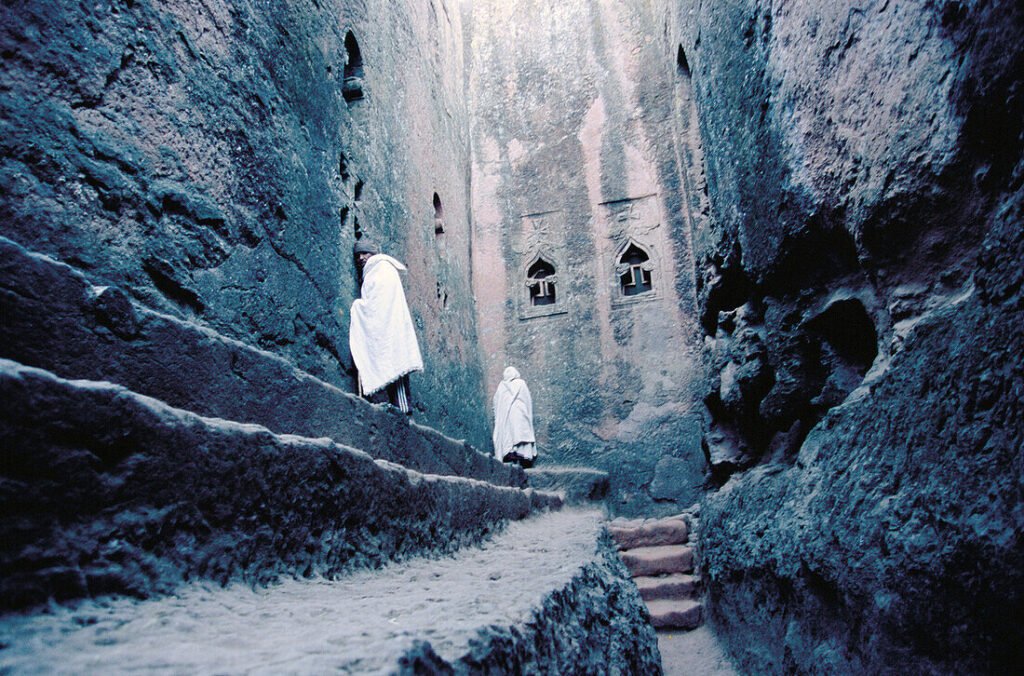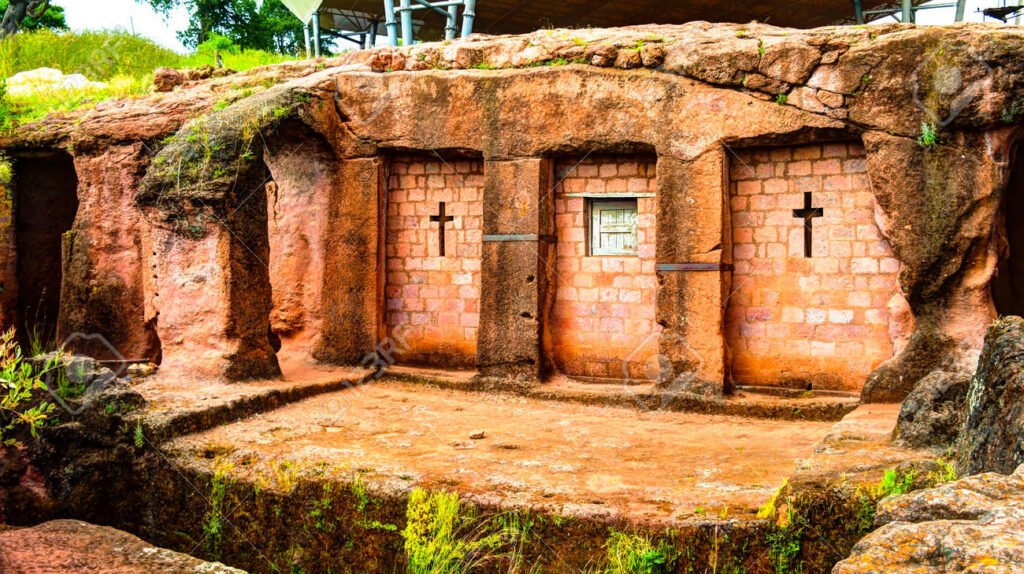Nestled in the northern highlands of Ethiopia, the town of Lalibela is home to one of the most remarkable spiritual and architectural treasures in the world: the Rock-Hewn Churches of Lalibela. Located about 370 miles from Addis Ababa, these churches are carved directly into the living rock, and their construction dates back nearly 800 years. The story of their creation is deeply intertwined with the vision of King Lalibela of the Zagwe dynasty, who sought to build a “New Jerusalem” on African soil.

Lalibela’s unique complex of 11 monolithic churches was designed to serve as a spiritual haven for Ethiopians, offering a place of pilgrimage. These churches bear names that echo biblical landmarks, like the River Jordan, the Church of Golgotha, and the Tomb of Adam, reinforcing the king’s intention of making this holy site resonate with religious significance. Today, Lalibela stands as a major pilgrimage site for the Ethiopian Orthodox Church, drawing believers from across the country and beyond.

The construction of the Lalibela churches is a marvel of both faith and craftsmanship. Historians believe the churches were built in phases spanning the seventh to the thirteenth centuries, although the exact timeline remains unclear. Ethiopian tradition credits King Gebre Mesqel Lalibela with overseeing the entire project. According to legend, he worked tirelessly for 24 years, with divine assistance from angels, to complete this monumental undertaking.

Situated at the foot of Mount Abuna Yosef, the churches are divided into two groups separated by the Yordannos River (named after the River Jordan). The northern group includes Biete Golgotha Mikael, Biete Mariam, Biete Denagel, Biete Maskal, and Biete Medhani Alem. The southern group, on the other hand, houses Biete Lehem, Biete Gabriel Rafael, Biete Abba Libanos, Biete Amanuel, and Biete Qeddus Mercoreus. The most iconic of all is Biete Ghiorgis, a striking, standalone church to the west. These sacred structures are connected by an intricate network of pathways, tunnels, and trenches, symbolizing the spiritual journey that pilgrims take between the churches—moving through the earth as a metaphor for ascending to heaven.

Despite being centuries old, these churches are still actively used for worship today. Major religious ceremonies, including Christmas and Easter, bring throngs of pilgrims to Lalibela to witness and participate in sacred rites. In recognition of their cultural and religious significance, the Lalibela churches were inscribed on UNESCO’s World Heritage List in 1978, solidifying their status as global treasures.




